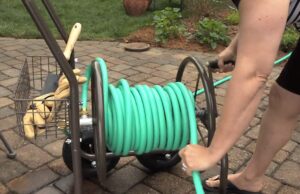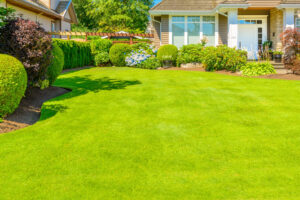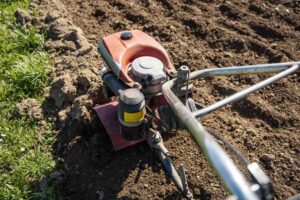How to Upgrade Your Garden: Transform Your Outdoor Space into a Homemendous Retreat
Your garden isn’t just an extension of your home—it’s an opportunity to create a personal sanctuary that reflects your lifestyle while enhancing your property’s value and ecological footprint. Whether you’re working with a compact urban courtyard or an expansive suburban landscape, strategic upgrades can transform an ordinary outdoor space into a “homemendous” retreat that serves your needs year-round. This comprehensive guide walks you through the process of elevating your garden from adequate to exceptional, with actionable advice for every budget and skill level.
Why Upgrade Your Garden?
Before diving into specific techniques, consider the compelling benefits of a thoughtfully upgraded garden:
- Enhanced Well-Being: Research consistently shows that time spent in well-designed outdoor spaces reduces stress and improves mental health
- Extended Living Space: A properly designed garden functions as an additional “room” for dining, entertaining, and relaxation
- Increased Property Value: According to the American Society of Landscape Architects, professional landscaping can add 15-20% to your home’s value
- Ecological Contributions: Strategic garden upgrades support local wildlife, improve soil health, and can reduce water consumption
- Personal Expression: Your garden reflects your aesthetic sensibilities and lifestyle priorities in a uniquely visible way
Assessing Your Current Garden: The Foundation for Transformation
Every successful garden upgrade begins with honest evaluation. Before purchasing plants or materials, conduct a thorough assessment of your existing space.
Site Analysis: Understanding What You’re Working With
- Document Current Conditions:
- Take “before” photographs from multiple angles
- Note existing plants worth preserving
- Identify problem areas (drainage issues, compacted soil, failing structures)
- Track sun patterns throughout the day
- Observe how you naturally use the space
- Soil Evaluation:
- Conduct a basic soil test for pH and nutrient levels
- Assess drainage by digging a 12-inch hole, filling with water, and timing absorption
- Note areas of compaction or poor structure
- Identify soil type (clay, sandy, loam) across different garden zones
- Infrastructure Inventory:
- Evaluate condition of hardscaping (patios, walkways, retaining walls)
- Assess irrigation systems for efficiency and coverage
- Check lighting fixtures for function and placement
- Examine existing structures (sheds, pergolas, fencing)
Defining Your Garden Vision and Priorities
With a clear understanding of your site, determine what matters most for your upgrade:
- Functional Priorities:
- How will you use this space? (entertaining, relaxation, play area, food production)
- What seasonal activities do you want to accommodate?
- Which existing functions need improvement?
- What new capabilities do you want to add?
- Aesthetic Direction:
- What garden styles resonate with you? (formal, cottage, modern, naturalistic)
- Which colors and textures appeal to your senses?
- How should your garden relate visually to your home’s architecture?
- What sensory experiences do you want to incorporate? (fragrance, sound, tactile elements)
- Practical Considerations:
- What is your maintenance tolerance? (time available weekly)
- What is your budget for immediate and phased improvements?
- What are your sustainability goals? (water conservation, wildlife support, reduced inputs)
- Do you need professional assistance for any aspects?
Developing Your Garden Upgrade Plan
Armed with site analysis and clear priorities, create a structured plan for implementation.
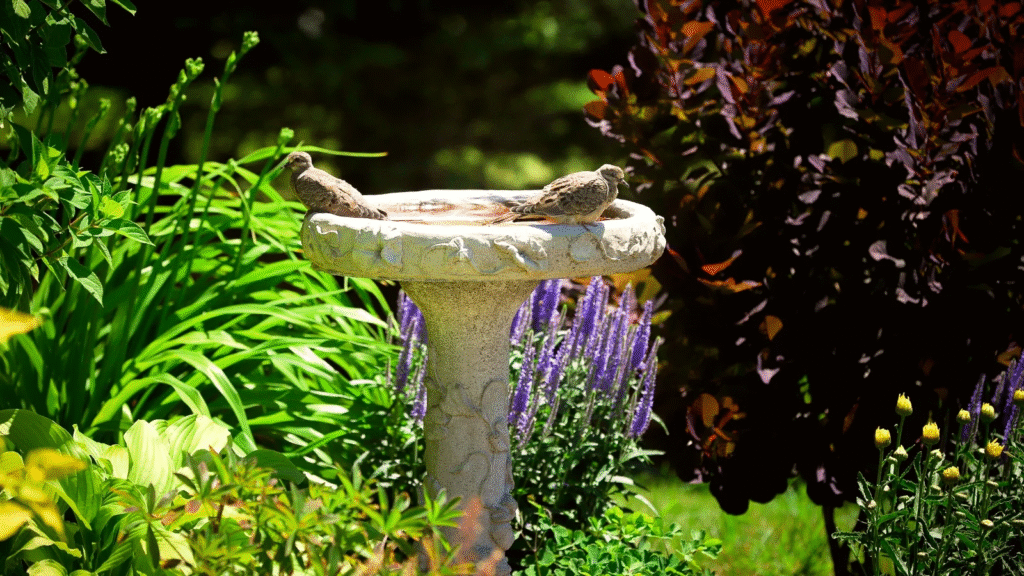
Design Approaches for Different Budget Levels
Budget-Friendly Transformations ($500-$2,000)
Focus on high-impact changes that require minimal construction:
- Rejuvenate existing plant beds with strategic additions
- Create defined edges between lawn and garden areas
- Incorporate container groupings for instant focal points
- Add a simple gravel seating area with movable furniture
- Install solar path lighting for evening ambiance
- Build raised beds for vegetable gardening
- Apply fresh mulch to improve appearance and soil health
Mid-Range Enhancements ($2,000-$10,000)
Balance hardscaping improvements with planting upgrades:
- Install a proper patio of stone or pavers
- Add a water feature like a fountain or small pond
- Construct a pergola or shade structure
- Upgrade irrigation to drip systems or smart controllers
- Introduce specimen trees as anchor plants
- Install a fire pit gathering area
- Build or upgrade garden steps and walkways
- Add landscape lighting with professional fixtures
Comprehensive Transformations ($10,000+)
Create a cohesive, fully realized outdoor living environment:
- Implement multi-level spaces with retaining walls
- Install comprehensive outdoor kitchen or dining area
- Create dedicated garden rooms with specific purposes
- Incorporate custom water features integrated with the landscape
- Install mature specimen plants for immediate impact
- Implement full irrigation and lighting systems
- Construct substantial hardscape elements (stone walls, extensive patios)
- Add permanent structures (greenhouse, studio space, pool house)
Phasing Your Garden Transformation
Most homeowners benefit from implementing garden upgrades in strategic phases:
- Foundation Phase:
- Address drainage and soil improvement
- Establish primary circulation patterns
- Install basic infrastructure (irrigation, electricity)
- Remove problematic elements
- Define and prepare planting areas
- Framework Phase:
- Install major hardscaping elements
- Plant anchor trees and shrubs
- Build key structures
- Establish lawn areas or ground covers
- Implement primary gathering spaces
- Refinement Phase:
- Add perennials and seasonal color
- Install specialty features (water elements, fire features)
- Incorporate decorative details and art
- Fine-tune lighting and irrigation
- Add furnishings and containers
Transformative Garden Elements: Key Components for Upgrade Success
Certain elements consistently deliver outsized impact in garden transformations. Consider incorporating these high-value components in your upgrade plan.
Creating Outdoor Rooms: Defined Spaces for Living
The most compelling gardens are organized as a series of interconnected “rooms” that serve different functions:
- Defining Room Boundaries:
- Use changes in flooring material (stone to gravel to wood)
- Create green walls with hedges or trellised plants
- Install permeable dividers (slatted screens, planted containers)
- Use level changes to delineate spaces
- Designing for Specific Activities:
- Dining Areas: Allow 3 feet of clearance around tables; position near kitchen access
- Lounge Spaces: Orient seating toward views or focal points; incorporate shade
- Play Areas: Ensure visibility from main living areas; use soft surfaces
- Retreat Spaces: Create enclosure with plantings; incorporate comfortable seating
- Connecting Rooms with Thoughtful Transitions:
- Use archways or pergolas as thresholds
- Create journey moments with narrowed pathways that open to reveal destinations
- Use consistent materials or plants as repeating elements that tie spaces together
- Consider how spaces flow for entertaining and daily use
Focal Points and Features: Creating Visual Anchors
Every compelling garden benefits from elements that draw the eye and create memorable moments:
- Water Features that engage multiple senses:
- Sound-Focused: Simple wall fountains, bubbling urns, or gentle cascades
- Reflective: Still pools that mirror surroundings and sky
- Interactive: Splash features for children or wildlife-supporting ponds
- Sustainable: Rainwater-harvesting systems with aesthetic components
- Structural Focal Points that provide year-round interest:
- Vertical Elements: Obelisks, trellises, or architectural salvage pieces
- Seating Features: Custom benches, swings, or conversation groupings
- Art Installations: Sculpture, mosaic, or weather-resistant wall pieces
- Specialty Structures: Moon gates, decorative arches, or viewing platforms
- Botanical Statements that command attention:
- Specimen Plants: Uniquely shaped trees, architectural plants, or rare varieties
- Mass Plantings: Dramatic drifts of a single plant variety
- Seasonal Showcases: Dedicated areas for peak bloom periods
- Container Collections: Grouped planters with coordinated designs
Hardscaping: The Backbone of Garden Structure
Well-executed hardscaping provides the framework for your garden’s organization and usability:
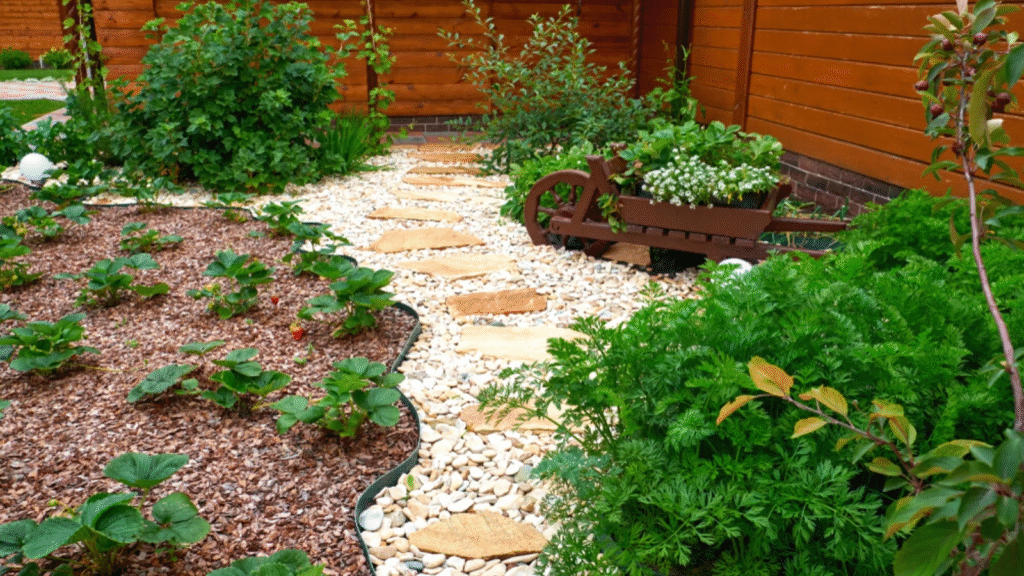
- Pathways and Circulation that guide movement and discovery:
- Choose materials appropriate to use intensity (casual paths vs. primary walkways)
- Vary path widths to indicate importance (main paths 4-5 feet, secondary 2-3 feet)
- Consider permeability for rainfall infiltration
- Design curves and straight sections to create rhythm and pacing
- Patios and Gathering Spaces sized for their purpose:
- Allow 16-20 square feet per person for dining areas
- Choose materials that complement architecture and reflect light appropriately
- Consider heat absorption and reflectivity for summer comfort
- Design with furniture arrangement in mind
- Walls and Edging for definition and problem-solving:
- Use retaining walls to create usable space on slopes
- Implement raised beds for improved drainage and accessibility
- Define planting areas with decorative edging
- Create seating opportunities with wall heights of 18-24 inches
Plant Selection Strategies for Garden Transformation
Strategic plant choices dramatically impact both the appearance and functionality of your upgraded garden.
Creating Year-Round Structure and Interest
Develop a planting framework that remains compelling through all seasons:
- Woody Plant Foundation (30-40% of plantings):
- Select trees and shrubs for their mature size and shape
- Include both deciduous and evergreen varieties for year-round structure
- Consider multi-season interest (spring flowers, fall color, winter bark)
- Position anchor plants to define spaces and frame views
- Perennial Framework (40-50% of plantings):
- Choose long-lived, low-maintenance varieties as backbone plants
- Create succession of bloom from early spring through late fall
- Include plants with winter presence through seedheads or structure
- Incorporate grasses for movement, sound, and winter interest
- Seasonal Accents (10-20% of plantings):
- Use annuals and tender perennials for concentrated color impact
- Incorporate bulbs for early-season interest and surprise moments
- Add container plantings that can be refreshed seasonally
- Consider vegetable and herb plantings for both utility and beauty
Planting for Sustainability and Low Maintenance
Modern garden upgrades emphasize ecological function alongside aesthetics:
- Resource-Efficient Plant Selection:
- Choose drought-tolerant species appropriate to your climate
- Group plants with similar water and light requirements
- Select disease-resistant varieties to reduce maintenance
- Incorporate natives adapted to local conditions (50-70% of plantings)
- Multi-Functional Plantings:
- Include edible components in ornamental landscapes
- Select plants that support pollinators and beneficial insects
- Incorporate species that fix nitrogen or accumulate nutrients
- Choose plants that reduce the need for mulch through self-seeding or spreading
- Strategic Plant Placement:
- Position evergreens to block winter winds
- Plant deciduous trees for summer shade and winter sun
- Use aromatic plants near seating areas and entrances
- Position messy plants (fruits, seedpods) away from hardscaping
Lighting Your Upgraded Garden: Extending Usability and Drama
Thoughtful lighting transforms your garden from a daytime-only space to a 24-hour environment:
Functional Lighting Strategies
- Task Lighting for specific activities:
- Dining areas: adjustable overhead lighting (25-40 lumens per square foot)
- Cooking spaces: directional lighting over work surfaces (70-80 lumens per square foot)
- Pathways: downlighting that illuminates surfaces without glare (5-10 lumens per square foot)
- Steps and level changes: integrated lighting for safety (20-30 lumens per linear foot)
- Security Lighting that enhances safety:
- Motion-activated fixtures at key entry points
- Ambient lighting that eliminates dark corners
- Timed systems that simulate occupancy
- Downlighting from trees for gentle illumination of broader areas
Aesthetic Lighting Approaches
- Focal Point Illumination:
- Uplight specimen trees to showcase architecture
- Spotlight garden art or water features
- Illuminate unique plant textures from various angles
- Create silhouette effects against walls or screens
- Ambient and Mood Lighting:
- String lights for festive atmosphere
- Lanterns and candles for intimate gatherings
- Subtle path markers that create rhythm
- Water-resistant LED strips under benches or steps
Sustainable Lighting Considerations
- Energy-Efficient Technologies:
- Solar-powered fixtures for areas without electrical access
- LED systems with 80%+ energy savings over traditional lighting
- Smart controllers that adjust to seasons and usage patterns
- Timers and motion sensors to minimize unnecessary illumination
- Ecological Impact Awareness:
- Direct light downward to reduce light pollution
- Use amber lights in wildlife-sensitive areas
- Create dark zones for nocturnal creature habitat
- Choose appropriate brightness levels for each area
Case Studies: Three Successful Garden Transformations
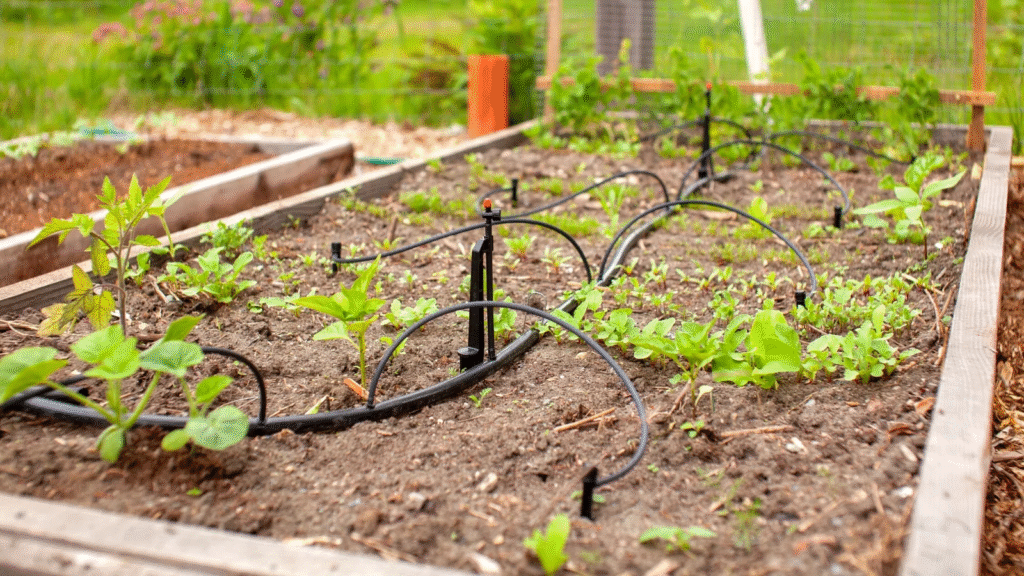
Urban Courtyard Maximization: 400 sq ft
Before Challenges:
- Cracked concrete paving throughout
- No privacy from neighbors
- Lack of planting space
- Poor drainage during rain
Upgrade Approach:
- Removed 60% of concrete, replacing with permeable pavers
- Installed custom planters along perimeter for green screen
- Created multi-level design with elevated dining platform
- Added wall-mounted water feature for sound masking
Key Elements:
- Modular furniture system that adapts for dining or lounging
- Vertical garden wall for herb production
- Strategic lighting for evening ambiance
- Container-based planting system for seasonal flexibility
Results:
- Usable outdoor space in all four seasons
- Increased property value by 8%
- Reduced water runoff by 70%
- Created habitat supporting 12 bird and butterfly species
Suburban Backyard Transformation: 2,500 sq ft
Before Challenges:
- Featureless lawn with minimal plantings
- No dedicated areas for activities
- Hot, western exposure with no shade
- Disconnect from home’s interior spaces
Upgrade Approach:
- Created three distinct outdoor rooms (dining, lounging, play)
- Installed shade pergola with retractable canopy
- Reduced lawn by 70%, replacing with native plant communities
- Established edible landscape components including fruit trees
Key Elements:
- Stone patio with custom fire pit
- Curved pathways connecting activity zones
- Rainwater harvesting system feeding irrigation
- Strategic placement of deciduous trees for summer shade
Results:
- Family outdoor use increased from 2 hours to 12+ hours weekly
- Irrigation needs reduced by 60%
- Wildlife sightings increased by 300%
- Neighborhood “demonstration garden” status achieved
Rural Property Enhancement: Half-Acre
Before Challenges:
- Exposed site with strong winds
- Poor soil from previous construction
- Disconnected relationship to surrounding landscape
- Maintenance challenges due to scale
Upgrade Approach:
- Established windbreak plantings with native species
- Implemented extensive soil remediation program
- Created destination points throughout property
- Designed maintenance-minimizing plant communities
Key Elements:
- Meadow conversion replacing 80% of lawn
- Network of mown paths through naturalistic plantings
- Outdoor shower and cooking area for extended stays
- Observation platform for landscape viewing
Results:
- Created four-season interest with minimal maintenance
- Established wildlife corridor connecting to adjacent natural areas
- Reduced weekend maintenance time from 6 hours to 1.5 hours
- Improved soil organic matter from 2% to 6% in three years
Implementation: Making Your Garden Upgrade Happen
With planning complete, successful implementation requires strategic thinking and careful execution.
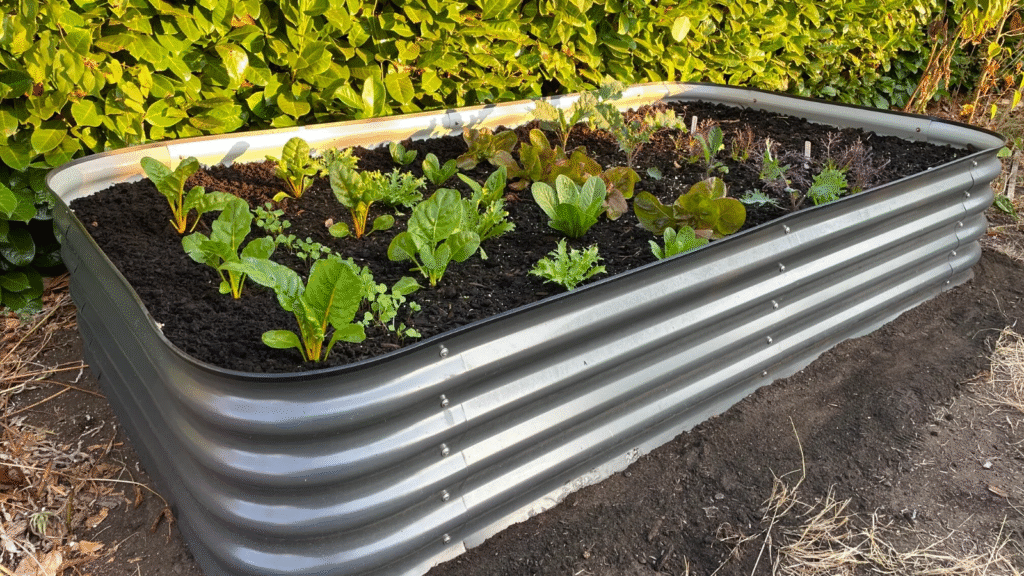
DIY vs. Professional Assistance: Making Smart Choices
Determine which upgrade elements are appropriate for self-implementation:
- Suitable DIY Projects:
- Soil improvement and bed preparation
- Simple paving projects (stepping stones, gravel areas)
- Basic carpentry (raised beds, simple benches)
- Most planting implementation
- Container arrangements and seasonal updates
- Professional Expertise Considerations:
- Comprehensive design development
- Construction requiring permits or engineering
- Irrigation system installation or major updates
- Electrical work including lighting systems
- Large tree planting or removal
- Substantial grading or drainage modifications
- Hybrid Approaches:
- Professional design with DIY implementation
- Contractor for hardscaping with personal planting installation
- Expert consultation for specific challenges with self-directed solutions
- Professional project launch with DIY maintenance and extension
Phased Implementation Strategies
Maximize results within budget and time constraints through strategic phasing:
- Critical Path Planning:
- Complete infrastructural elements before plantings
- Address drainage issues before constructing patios or structures
- Install irrigation and lighting conduit before finalizing surfaces
- Complete messy construction before fine grading and planting
- Seasonal Timing Optimization:
- Conduct major earthwork in dry seasons
- Plant trees and shrubs during dormant periods
- Install irrigation before summer heat stress
- Plan for outdoor living area completion before primary use season
- Budget-Stretching Approaches:
- Purchase small-sized plants for long-term elements
- Source materials from demolition sites or stone yards
- Propagate plants from divisions or cuttings
- Implement hardscaping correctly the first time with quality materials
Maintaining Your Upgraded Garden: Protecting Your Investment
A thoughtfully upgraded garden requires appropriate care to mature successfully.
Establishment-Phase Maintenance
The first year after installation requires specific attention:
- Watering Protocols:
- Monitor soil moisture regularly, especially during first three months
- Water deeply and infrequently to encourage deep root development
- Adjust irrigation schedules monthly based on plant establishment
- Hand-water specific plants showing stress
- Structural Support and Protection:
- Stake trees properly with adjustable systems
- Protect new plantings from wildlife browsing
- Apply appropriate mulch to maintain soil moisture
- Monitor for signs of transplant shock
- Early Intervention:
- Address weeds before they establish or seed
- Correct minor hardscape settling or movement promptly
- Adjust plant spacing if crowding becomes apparent
- Document plant performance for future reference
Long-Term Care Strategies
Sustain your garden’s beauty and function through appropriate ongoing maintenance:
- Seasonal Maintenance Calendar:
- Spring: Cutback, division, soil testing, mulch refreshment
- Summer: Deadheading, watering management, pest monitoring
- Fall: Structural pruning, leaf management, winter protection
- Winter: Hardscape inspection, tool maintenance, design refinement
- Adaptive Management Practices:
- Embrace editing and evolution as plants mature
- Replace underperforming plants with proven alternatives
- Adjust maintenance practices based on observed results
- Document seasonal high points and challenges
- Resource-Efficient Care:
- Implement water-conserving practices (mulch, appropriate irrigation)
- Create closed-loop systems for organic matter
- Minimize external inputs (fertilizers, pesticides)
- Develop maintenance skills that honor plant natural forms
Conclusion: The Living Legacy of Your Garden Upgrade
A thoughtfully upgraded garden is never truly “finished” but rather continues to evolve and mature over time. By approaching your garden transformation with intention and knowledge, you create not just an enhanced outdoor space but a dynamic ecosystem that grows more valuable and beautiful with each passing season.
Your upgraded garden serves as both personal sanctuary and environmental contribution—a living legacy that improves quality of life while strengthening connections to the natural world. Whether you’ve implemented a modest enhancement or a comprehensive transformation, your efforts create ripples of positive impact that extend far beyond your property boundaries.
As you enjoy your homemendous garden retreat, take time to document its evolution, share its successes, and continue to dream about its future possibilities. The most rewarding gardens are those that grow alongside their caretakers, reflecting changing needs and deepening understanding of the natural systems that sustain us all.


